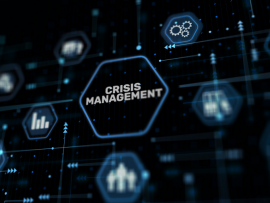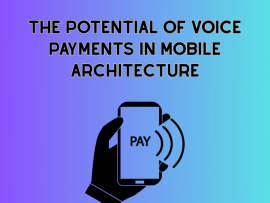This blog discusses the importance of a client-centric approach in solutions consulting, highlighting best practices for enhancing client satisfaction and business outcomes by prioritizing their needs and experiences. Understanding the Client-Centric Approach A client-centric approach to consulting involves understanding and meeting unique client needs, ensuring tailored solutions, and building stronger, trusting relationships through deep engagement with their business, culture, and industry challenges. Best Practices for Client-Centric Solutions Consulting 1. Deep Dive into the Client’s Business Overview: A thorough understanding of your client’s business is foundational to a client-centric approach. This means going beyond surface-level knowledge to grasp the nuances of their industry, business model, and competitive landscape. Strategies: Conduct comprehensive business audits and SWOT analyses. Engage with multiple stakeholders across the client’s organization to gain diverse perspectives. Regularly review industry trends and how they impact the client. 2. Active Listening and Empathy Overview: Effective consultants master the art of active listening, which involves fully concentrating, understanding, responding, and then remembering what the client says. This skill is crucial for uncovering the real issues that clients face. Strategies: Practice active listening in every interaction and confirm understanding by paraphrasing back what has been discussed. Train your team on emotional intelligence to better relate to and respond to client emotions and needs. 3. Tailored Solutions Overview: One-size-fits-all solutions do not suffice in a client-centric approach. Customization is key, ensuring that each strategy..
Read MoreThis blog discusses the importance of assessing the success of consulting projects using key performance indicators (KPIs) to validate engagement effectiveness and refine future strategies, ensuring both the consultant and the client understand the value delivered. Understanding KPIs in Consulting Key performance indicators for consulting projects should reflect both the objectives of the engagement and the broader impact on the client’s business. Effective KPIs are S.M.A.R.T (Specific, Measurable, Achievable, Relevant, Time-bound) and align with the strategic goals of the client organization. Essential KPIs and Metrics for Consulting Success 1. Client Satisfaction Score Overview: Client satisfaction is a direct indicator of how well the consulting service met the expectations set out at the project's inception. Metrics: Satisfaction Surveys: Post-project surveys with specific questions about the quality of service, professionalism, and outcome effectiveness. Net Promoter Score (NPS): A metric that measures the likelihood of the client recommending the consultancy to others, reflecting overall satisfaction and the consultant's performance. 2. Return on Investment (ROI) Overview: ROI measures the financial return on the consulting investment, which is crucial for projects aimed at improving profitability or cost reduction. Metrics: Cost Savings: For projects focused on reducing costs or improving efficiency, measure the cost savings achieved versus the cost of the consulting project. Revenue Growth: For growth-oriented projects, measure any increase in revenue directly attributed to the consulting interventions. 3. Project Delivery Metrics Overview: These metrics..
Read MoreThis blog discusses the benefits of cross-industry experience in solutions consulting, highlighting its potential to enhance problem-solving skills and give consultants a competitive edge in their field. Enhancing Problem-Solving Skills Diverse Problem Exposure Consultants with diverse industry experience have a robust problem-solving toolkit, adapting strategies from different contexts and business environments. For instance, a healthcare strategy can be adapted to a manufacturing issue. Innovative Solutions Cross-industry experience fosters creativity and innovation. Consultants with a broad background are more likely to draw on unconventional ideas inspired by practices outside the industry in question. This ability to think outside the box is crucial when traditional solutions fall short or when a fresh approach can lead to breakthrough improvements for the client. Building a Versatile Skill Set Broader Technical Expertise Working across industries helps consultants develop a versatile skill set that enhances their adaptability. The technical demands in IT, for example, differ vastly from those in finance or retail. Navigating such diverse requirements not only broadens a consultant’s expertise but also makes them more flexible and capable of handling a variety of client needs. Enhanced Communication Skills Interacting with different types of clients and stakeholders across industries sharpens a consultant's communication skills. They learn to modify their delivery, tone, and even the technical jargon used, depending on the audience. Effective communication is critical in consulting, where understanding client needs and conveying solutions clearly..
Read MoreSolutions consultants play a crucial role in navigating crises in the fast-paced business environment, providing specialized expertise and objective perspectives to guide businesses through crisis management and recovery. Understanding the Role of Solution Consultants Solutions consultants identify, analyze, and solve business problems, working with diverse clients across industries. They provide strategic insights and actionable solutions during crises for business stabilization. Key Contributions of Solutions Consultants in Crisis Management 1. Rapid Response and Assessment Overview: When a crisis hits, the first step is a rapid assessment. Solutions consultants quickly gather data, assess damage, and identify the immediate risks to business operations. Action Steps: Conduct a thorough analysis of the crisis and its impacts on all aspects of the business. Identify key areas of vulnerability and immediate threats to operational continuity. 2. Crisis Strategy Development Overview: Consultants develop tailored strategies that address the specific nuances of the crisis at hand. This often involves making tough decisions quickly, such as cost adjustments, resource reallocation, or temporary suspension of operations. Action Steps: Work with leadership teams to outline clear, actionable strategies for crisis management. Prioritize actions based on their potential impact on stabilizing the business. 3. Communication Management Overview: Effective communication is critical in crisis management. Solutions consultants help formulate communication strategies that maintain transparency with stakeholders, including employees, customers, investors, and the public. Action Steps: Develop a communication plan that addresses all stakeholders'..
Read MoreDecentralized Finance (DeFi) relies heavily on blockchain networks to function securely and efficiently. At the core of these networks are consensus mechanisms—the protocols that ensure all participants in a decentralized system agree on the state of the blockchain. These mechanisms guarantee that transactions are legitimate and prevent fraud. The two most prominent consensus mechanisms used in blockchain and DeFi are Proof of Work (PoW) and Proof of Stake (PoS). Each plays a crucial role in maintaining blockchain security but operates differently, with distinct benefits and trade-offs. 1. Proof of Work (PoW): The Original Consensus Mechanism PoW was first introduced with Bitcoin and has become the foundational mechanism for many early blockchain networks. In PoW, miners solve complex mathematical puzzles to validate transactions and add them to the blockchain. This process requires significant computational power and energy consumption, which makes it secure but resource-intensive. Advantages: Highly secure and resilient to attacks. Proven track record, as seen with Bitcoin and Ethereum (before Ethereum switched to PoS). It is decentralized and transparent; anyone can participate by running a node. Disadvantages: High energy consumption makes it less environmentally friendly. Slower transaction speeds and limited scalability. While PoW ensures network security, the need for continuous mining makes it less sustainable in the long run, especially for DeFi platforms requiring fast and scalable solutions. 2. Proof of Stake (PoS): A Greener Alternative PoS was introduced as..
Read MoreAs mobile payments continue to grow, ensuring compliance with financial regulations is critical for businesses handling transactions, customer data, and banking integrations. Failing to meet compliance standards can lead to hefty fines, security breaches, and reputational damage. Mobile payment architectures must follow global regulations, implement strong security measures, and establish transparent data policies to maintain trust and security. Here’s how businesses can ensure compliance in mobile payment systems. 1. Understand Key Regulatory Standards Different regions enforce specific regulations to govern digital payments, financial security, and consumer protection. Essential Compliance Standards: PCI DSS (Payment Card Industry Data Security Standard) – Ensures that businesses handling credit card transactions protect cardholder data. GDPR (General Data Protection Regulation) – Governs data privacy in the European Union, requiring user consent for data collection. PSD2 (Revised Payment Services Directive) – A European regulation mandating strong customer authentication (SCA) and secure open banking APIs. KYC (Know Your Customer) and AML (Anti-Money Laundering) – Payment platforms must verify customer identities to prevent fraud. Ensuring adherence to these regulations protects businesses, users, and financial institutions from legal risks. 2. Implement Strong Authentication and Security Measures Mobile payment systems must prioritize security to protect against fraud and data breaches. Best Practices for Secure Authentication: Use multi-factor authentication (MFA) with biometric security (fingerprint, facial recognition). Implement OAuth 2.0 and secure tokenization to protect transaction data. Encrypt all sensitive financial data using..
Read MoreThe world of mobile payments is evolving rapidly, with technology constantly pushing the boundaries of how we interact with digital services. Among the most exciting innovations is the rise of voice payments, which enable users to make transactions through voice commands. As mobile architecture becomes more advanced, integrating voice payment systems offers users new opportunities for making secure, seamless, and hands-free transactions. Let’s explore the potential of voice payments in mobile architecture and how they are reshaping the future of payments. 1. Seamless, Hands-Free Transactions Voice payments utilize voice recognition technology, enabling users to complete transactions simply by speaking to their mobile devices. This hands-free convenience can make purchasing products, paying bills, or transferring money as easy as asking your smartphone to do it. Whether you're driving, cooking, or multitasking, voice payments allow users to execute payments without having to touch or even look at their device, offering a level of convenience that traditional mobile payment methods can’t match. Why it matters: Convenience: Voice payments simplify transactions, allowing users to make payments while performing other tasks. Increased accessibility: For users with physical disabilities or those who struggle with typing, voice payments offer a more accessible way to engage in mobile transactions. 2. Enhanced Security Features Voice payments offer an extra layer of security through voice biometrics, a form of voice authentication that analyzes unique vocal characteristics. Unlike passwords or PINs,..
Read MoreCybersecurity is no longer just an IT issue—it’s a critical business priority. In a digital economy where data drives decisions, operations, and revenue, the threat of cyberattacks impacts every level of an organization. Yet, many executives still view cybersecurity as a back-office concern rather than a boardroom topic. This mindset is not only outdated, but it’s also risky. Cyber Threats Are Business Risks Modern cyber threats target not only systems but also intellectual property, financial data, customer trust, and brand reputation. A single data breach can result in millions of dollars in damages, lead to regulatory fines, and severely damage public perception. Cybersecurity failures now directly affect business continuity, shareholder value, and strategic goals. That’s why cybersecurity must be integrated into executive decision-making, rather than being relegated to the IT department. The Role of Executives in Cybersecurity Executives set the tone for an organization’s security culture. When leadership prioritizes cybersecurity, it sends a clear message that protecting data and digital assets is an integral part of conducting business responsibly. This doesn’t mean executives need to become technical experts, but they should: Understand the risks and vulnerabilities their business faces Support investment in security infrastructure and talent Ask the right questions during strategic planning Ensure cybersecurity is included in business continuity and crisis response plans Promote company-wide security awareness and training Compliance and Accountability Regulatory frameworks, such as GDPR, HIPAA, and..
Read More








